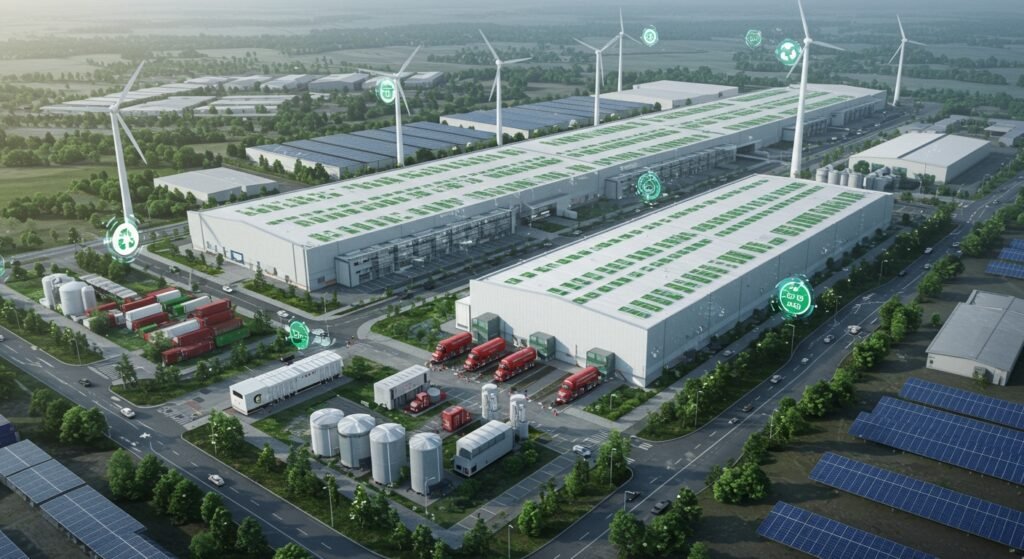Sustainable Supply Chains: The Path Toward Net-Zero Industry
The global industrial landscape is undergoing a profound transformation, driven by an urgent need to address climate change and achieve ambitious net-zero targets. At the heart of this shift lies the concept of a sustainable supply chain – a critical framework for businesses striving to minimize their environmental impact, enhance social responsibility, and ensure long-term economic viability. This article delves into how integrating sustainability throughout the entire supply chain isn’t just an ethical choice, but a strategic imperative for industries aiming for a carbon-neutral future.
Table of Contents
- The Imperative for Sustainable Supply Chains
- Key Pillars of a Sustainable Supply Chain
- Technologies Driving Net-Zero Efforts
- Navigating Challenges and Unlocking Solutions
- The Path Forward: Collaboration and Innovation
- Conclusion
The Imperative for Sustainable Supply Chains
As consumer awareness grows and regulatory pressures intensify, companies are realizing that their environmental footprint extends far beyond their direct operations. The vast majority of a product’s carbon emissions, often up to 80%, occur within its supply chain, from raw material extraction to manufacturing, transportation, and end-of-life disposal. Therefore, a truly effective carbon reduction strategy must encompass every link in this chain. Embracing a sustainable supply chain approach allows businesses to not only meet sustainability goals but also build resilience, mitigate risks, and foster brand loyalty in an increasingly conscious market.
Key Pillars of a Sustainable Supply Chain
Achieving net-zero through supply chain transformation requires a multi-faceted approach, focusing on several critical areas:
Responsible Sourcing & Transparency
The journey to sustainability begins at the source. Responsible sourcing involves selecting suppliers who adhere to ethical labor practices, minimize environmental damage, and promote fair trade. This includes scrutinizing the origins of raw materials, ensuring they are not contributing to deforestation, water pollution, or human rights abuses. Transparency throughout the supply chain, often facilitated by technologies like blockchain, allows companies to trace products from their origin to the consumer, providing accountability and building trust. This is fundamental for robust carbon reduction efforts.
Optimizing Logistics for Carbon Reduction
Transportation and warehousing are major contributors to greenhouse gas emissions. Logistics optimization is key to reducing this impact. Strategies include:
- Route optimization to minimize fuel consumption.
- Shifting to lower-emission transport modes (e.g., rail or sea over air freight).
- Investing in electric or hydrogen-powered vehicle fleets.
- Consolidating shipments to reduce empty mileage.
- Designing efficient warehouse layouts to minimize energy use.
These efforts directly contribute to significant carbon reduction and move companies closer to their net-zero aspirations.
Embracing Circular Economy Principles
A sustainable supply chain extends beyond just reducing emissions; it also involves adopting circular economy principles. This means designing products for durability, reusability, and recyclability, thereby minimizing waste and maximizing resource utilization. Instead of a linear “take-make-dispose” model, a circular approach focuses on keeping materials in use for as long as possible, regenerating natural systems, and reducing reliance on virgin resources. This significantly lowers the overall environmental footprint and supports the journey to net-zero.
Technologies Driving Net-Zero Efforts
Advancements in technology are crucial enablers for developing a truly sustainable supply chain. Here’s a look at key innovations:
| Technology | Impact on Sustainability |
|---|---|
| Blockchain | Enhances supply chain transparency and traceability, verifying ethical sourcing and emissions data. |
| AI & Machine Learning | Optimizes logistics routes, predicts demand to reduce waste, and identifies efficiency gains. |
| IoT Sensors | Monitors energy consumption, equipment performance, and environmental conditions in real-time. |
| Cloud Computing | Provides scalable infrastructure for data analytics without significant on-premise energy use. |
| Digital Twins | Simulates supply chain changes to forecast environmental impact and optimize processes before implementation. |
Navigating Challenges and Unlocking Solutions
While the benefits of a sustainable supply chain are clear, implementation can be complex. Challenges include the high upfront cost of new technologies, lack of global standards, and resistance to change from entrenched suppliers. Solutions involve government incentives, industry collaboration to set best practices (learn more about global sustainability initiatives), and robust supplier engagement programs. Educating and incentivizing suppliers to adopt more sustainable practices is paramount.
For more insights on enhancing business efficiency and sustainability, you can read more on our blog.
The Path Forward: Collaboration and Innovation
Achieving net-zero industry is not a task for individual companies alone. It requires unprecedented collaboration across value chains, industries, and even governments. Sharing best practices, investing in joint research and development for green technologies, and advocating for supportive policy frameworks are essential. Continuous innovation in materials science, energy systems, and logistical approaches will pave the way for a truly regenerative and carbon-neutral future. The commitment to a sustainable supply chain today defines the industry of tomorrow.
Conclusion
The transition to net-zero industry is one of the defining challenges of our era. A robust and sustainable supply chain is not merely a component of this transition; it is its very backbone. By focusing on responsible sourcing, optimizing logistics for carbon reduction, embracing circular economy principles, and leveraging cutting-edge technology, businesses can significantly reduce their environmental footprint. The journey is complex, but the benefits—environmental, social, and economic—are immense, ensuring a resilient and thriving future for all.

